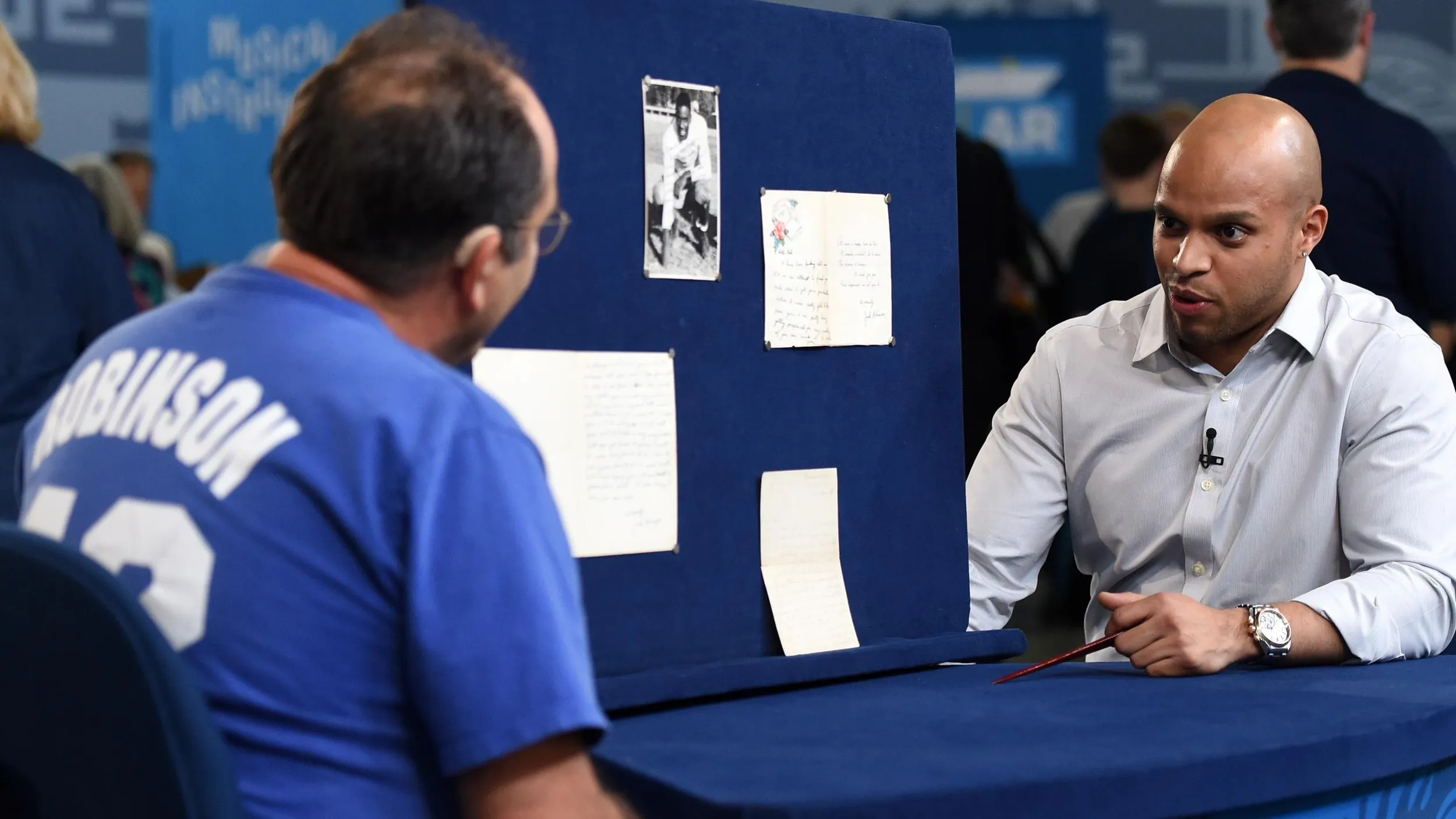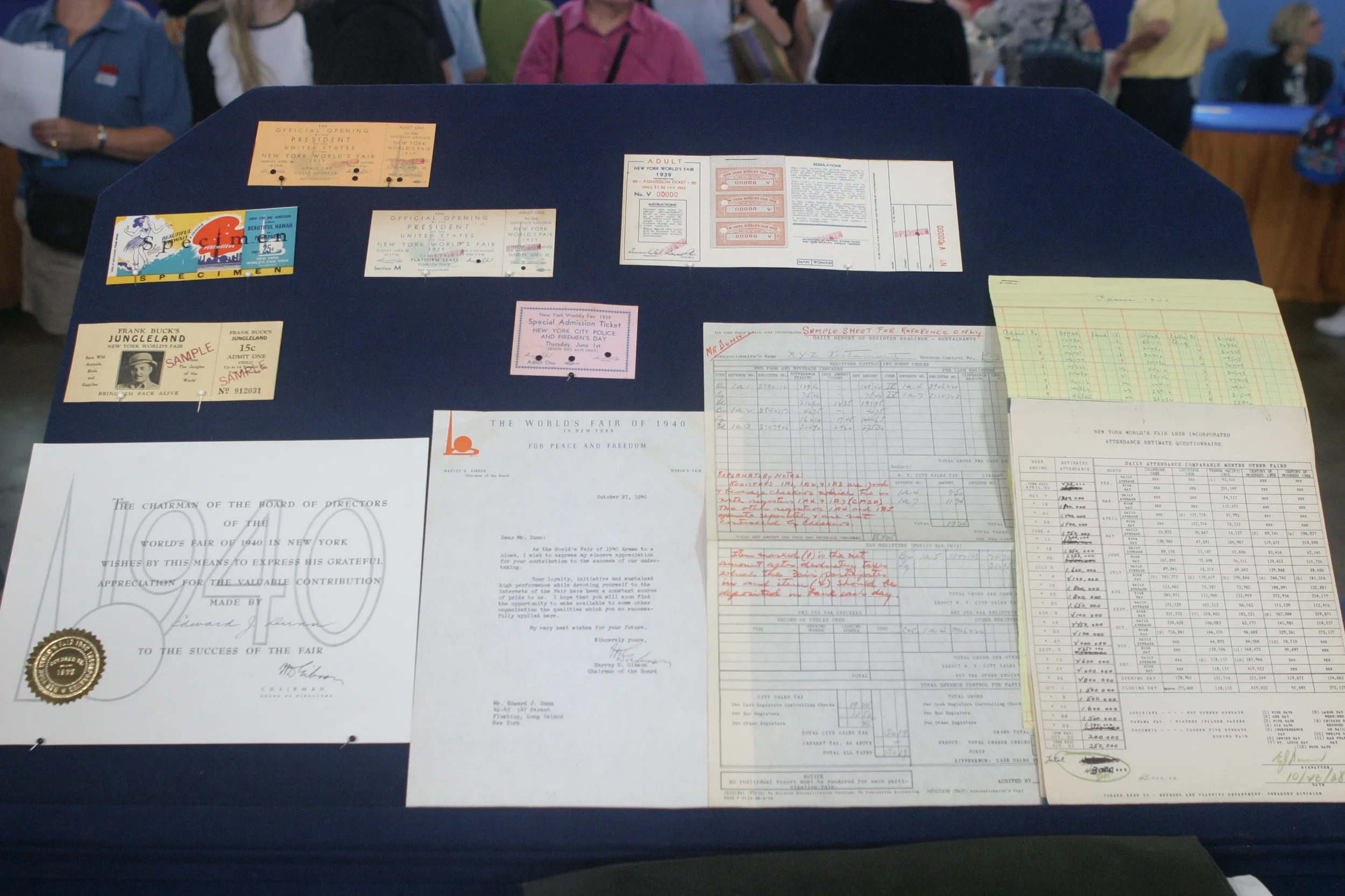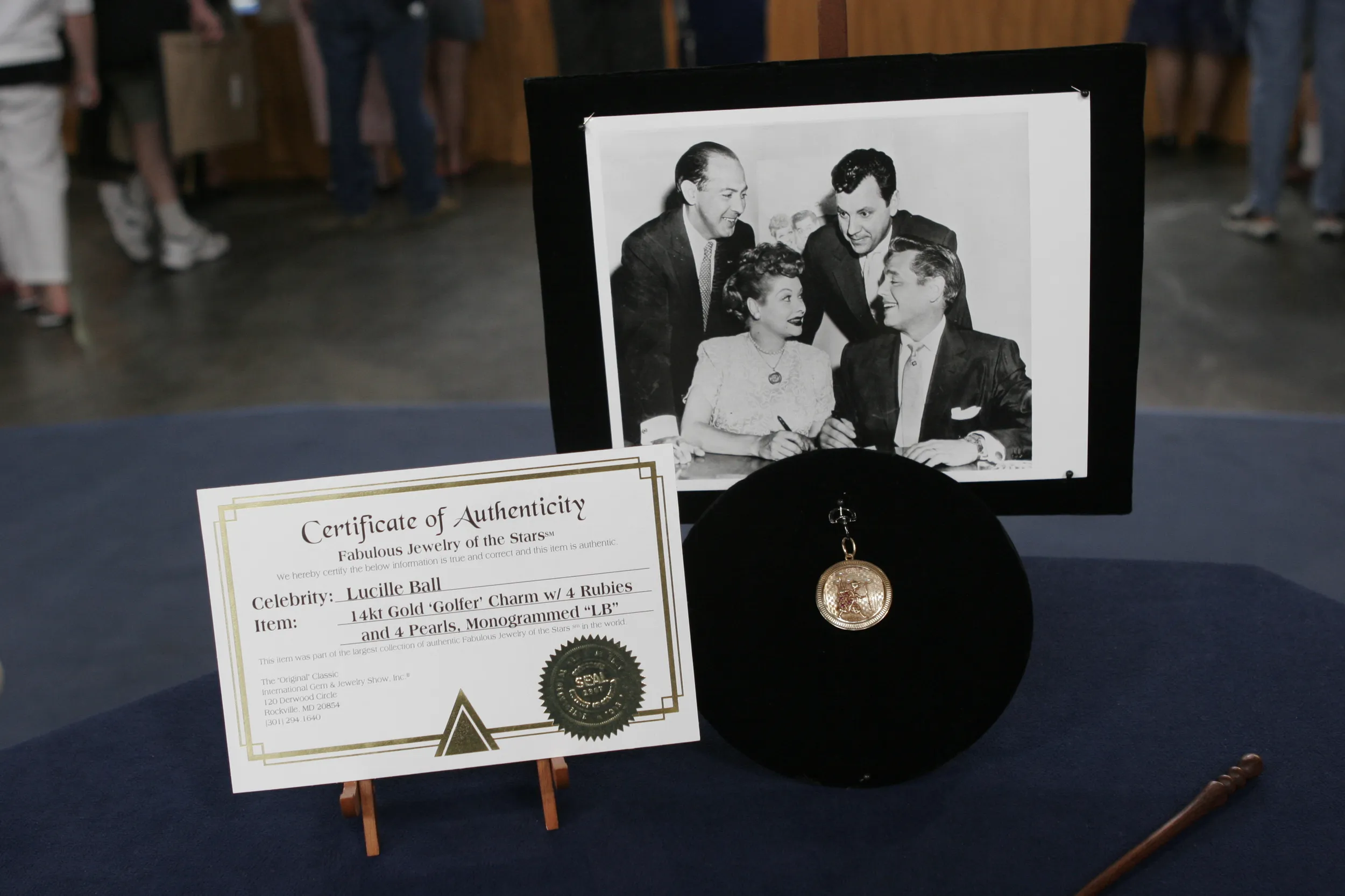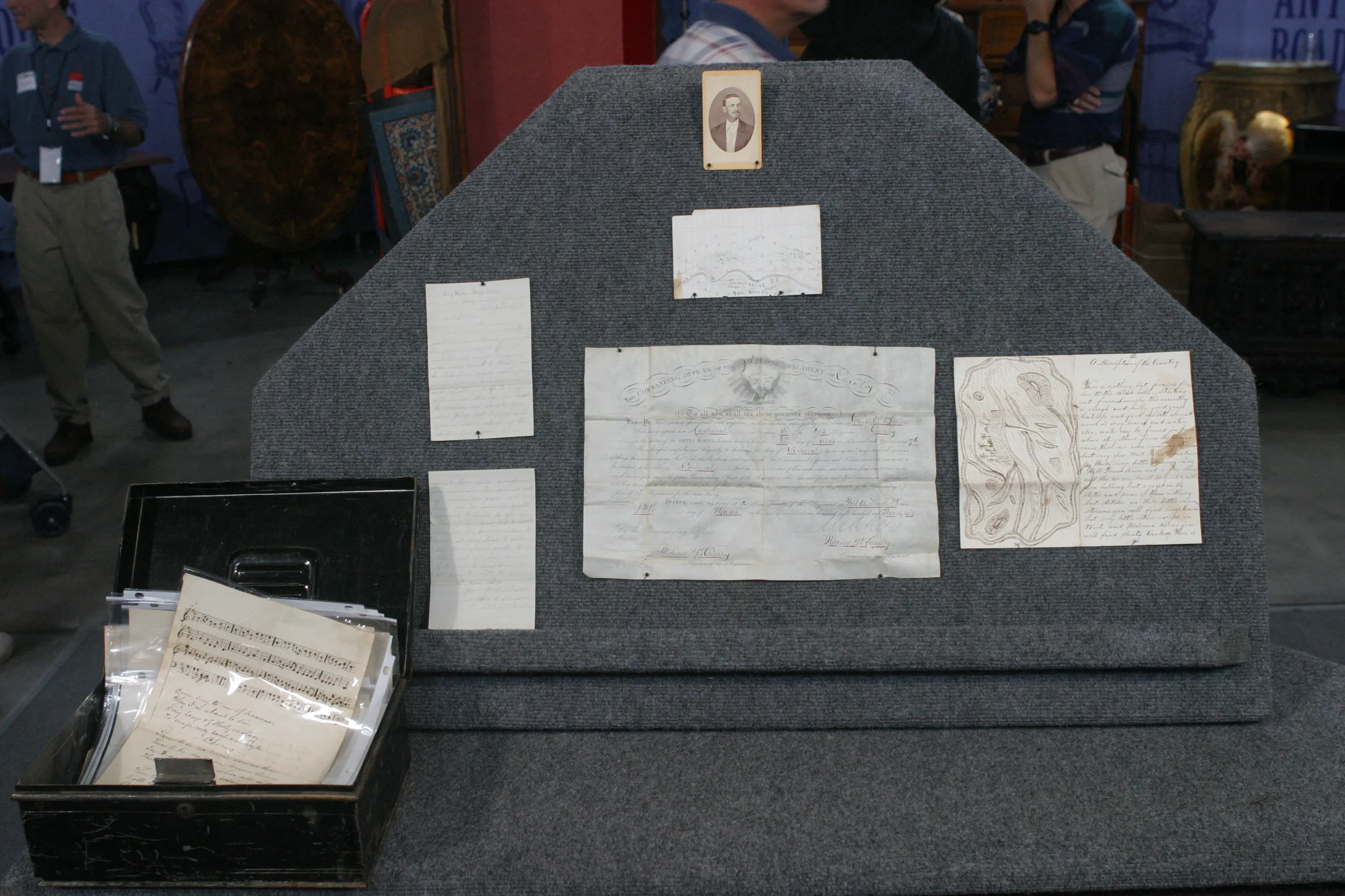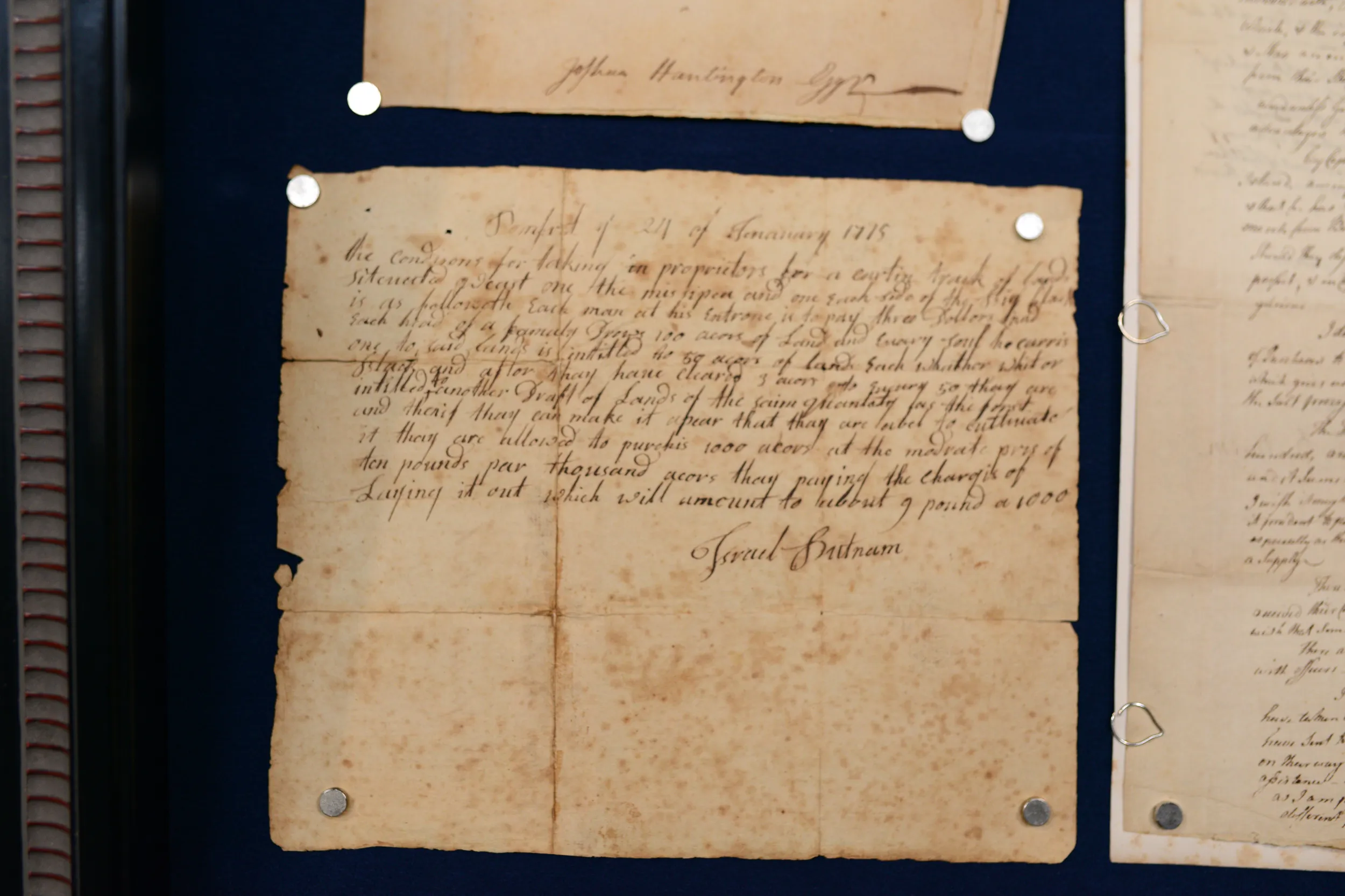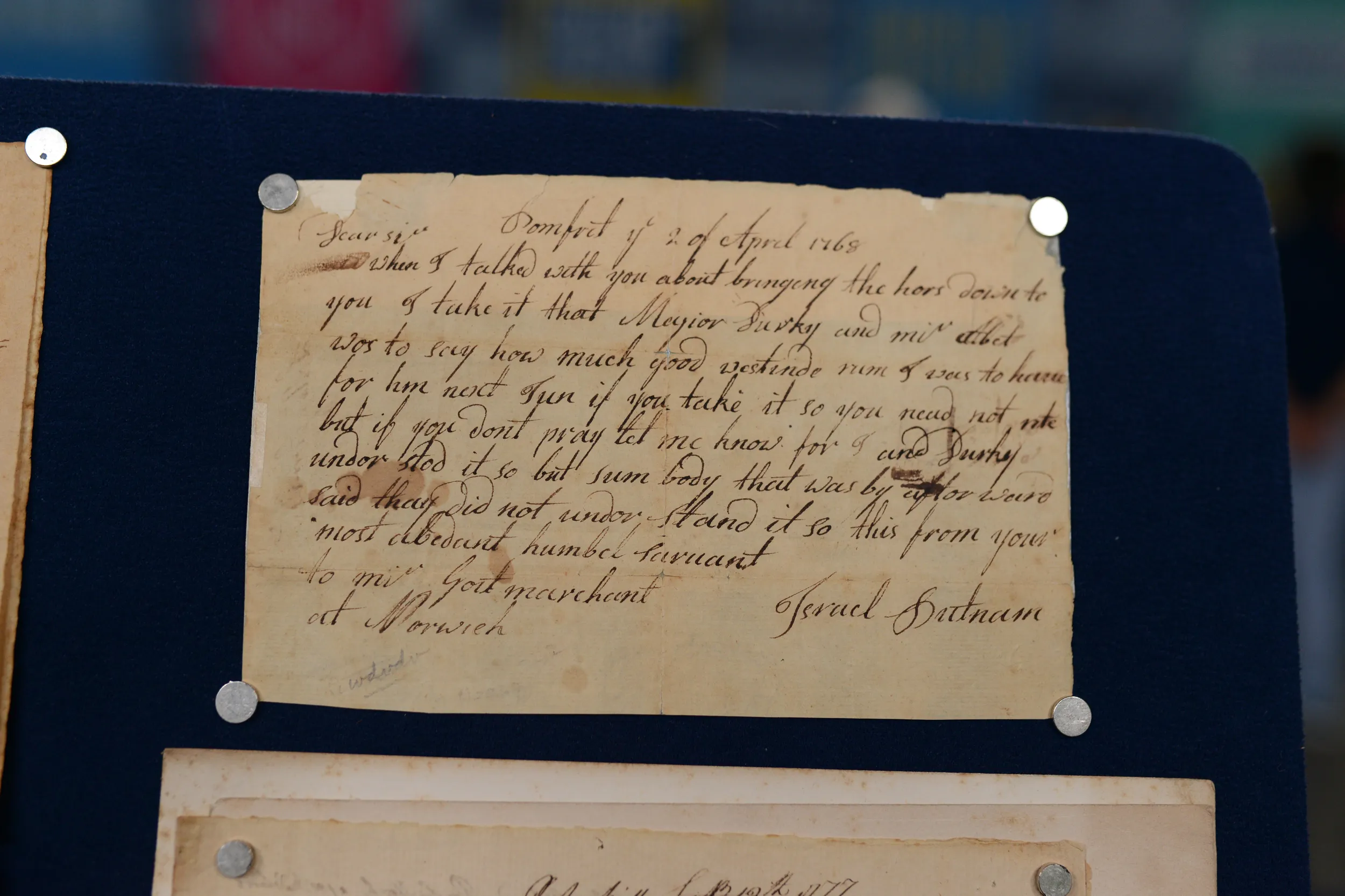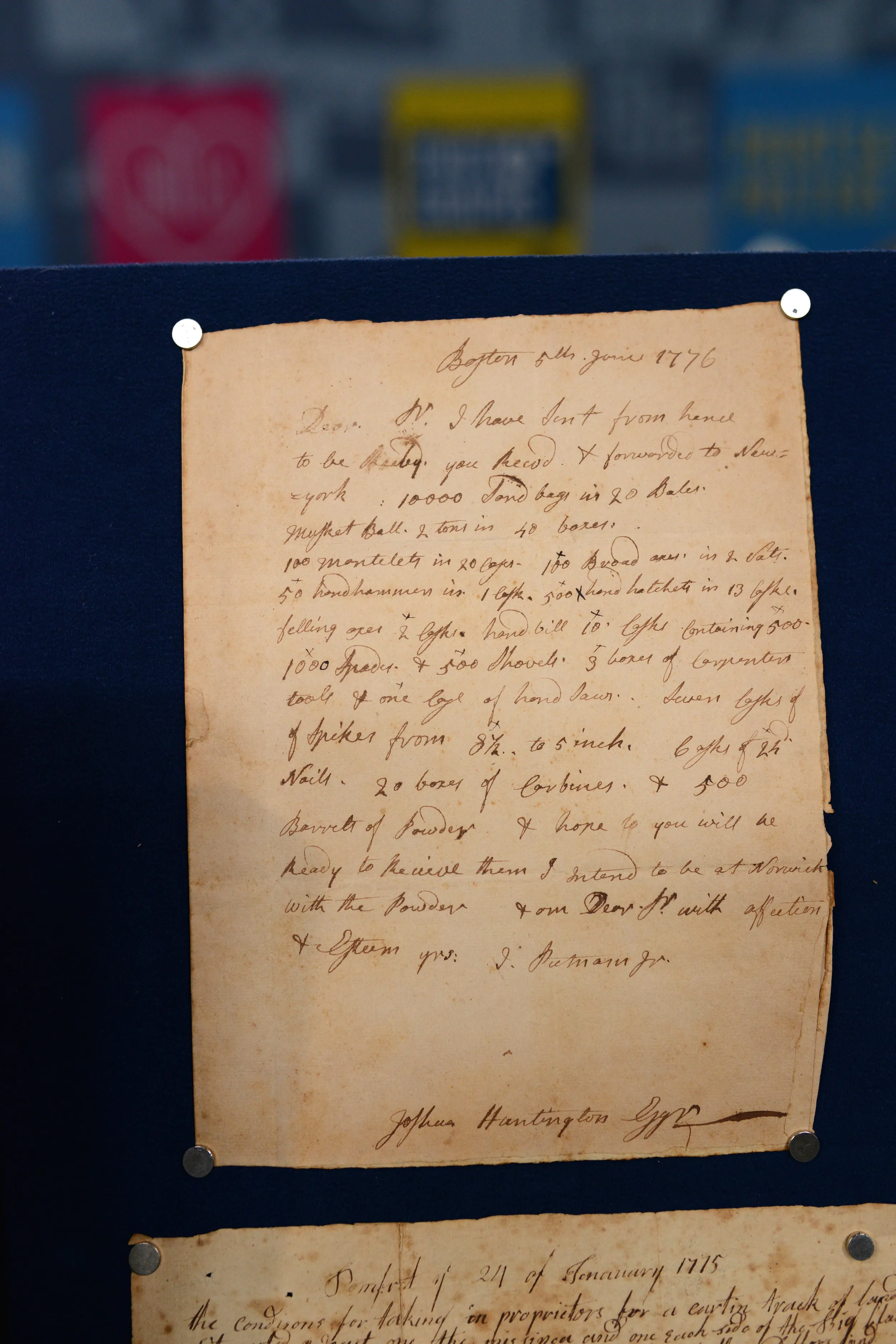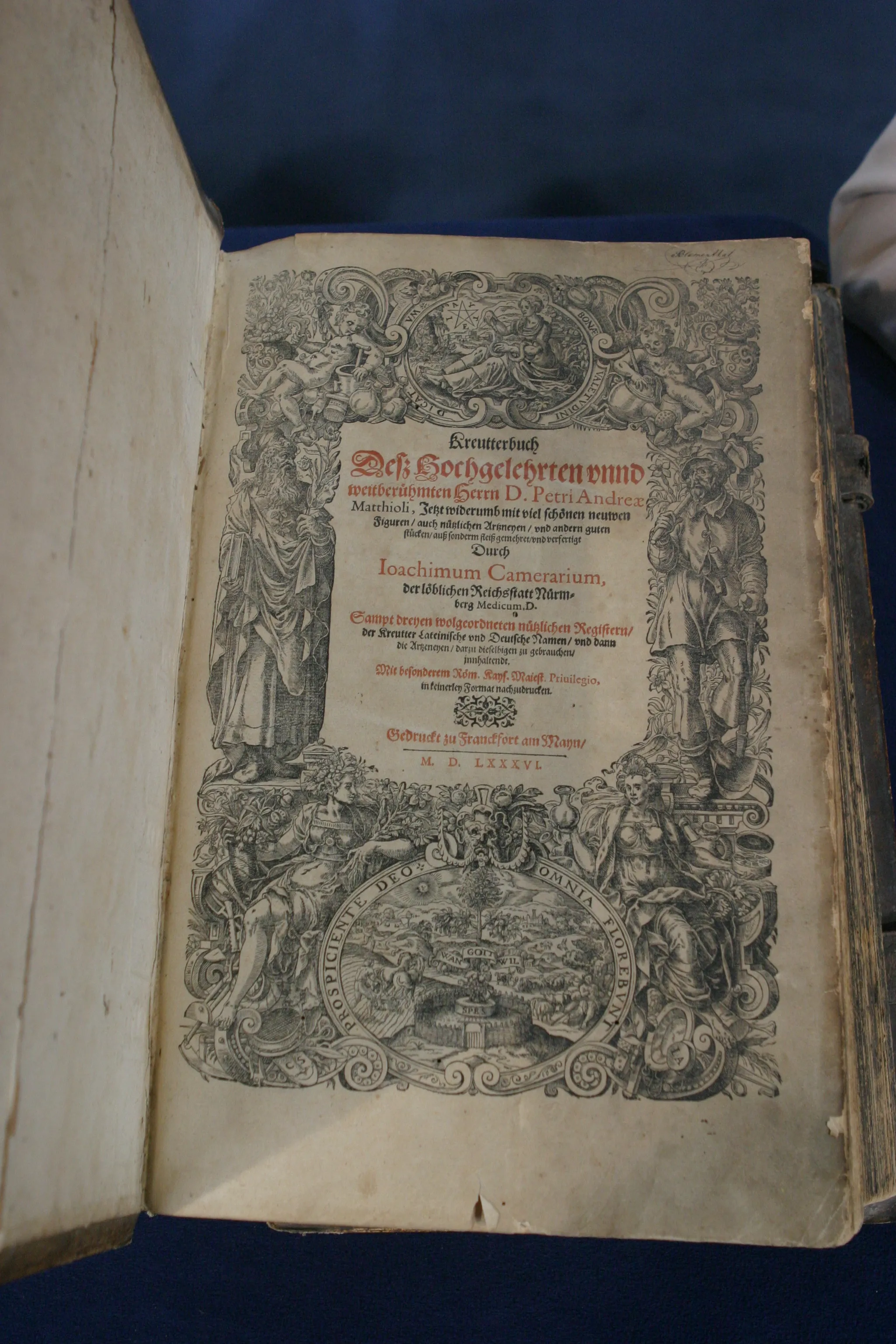GUEST: I brought some letters from Israel Putnam during the Revolutionary War. I really don't know much about them.
APPRAISER: How did you get them?
GUEST: From my grandmother, I inherited them.
APPRAISER: How did she get them, do you know?
GUEST: I'm not exactly sure. She was a collector.
APPRAISER: Of what sort of things?
GUEST: A lot of artifacts, furniture, artwork.
APPRAISER: Okay. You've got a collection of material relating to Israel Putnam. He is a famous Revolutionary War general. He was an important figure at the Battle of Bunker Hill. He is credited with having said, "Don't fire until you see the whites of their eyes." He may or may not have said that, but he is generally credited. And you've got a collection of material, of letters, some of which predate the Revolutionary War, but some of which are actually written during the Revolutionary War. If you look at this letter and this letter, those two letters are early. One is 1768, and the other is January of 1775, which is four months before Lexington and Concord, before the Revolutionary War begins. These are sort of business-y letters.
One is about buying a horse, the other is about a land transaction. But they are entirely in Israel Putnam's hand, in his rather unusual style. This letter is a letter written by him as a general, as a commanding general. It's September 13, 1777. It's written from Putnam to John Hancock, who is at that time the president of the Continental Congress, and it is a really dense, rich letter reporting on the events that are happening at that moment. At September of 1777, Putnam is in New York. He is preparing to fight Clinton at the Battle of Fort Montgomery, which the colonists lose. But so he's sending important information about the state of his troops. That's actually in the hand of a secretary, but signed by Putnam on the second page. This letter, it's a great war date, 1776, letter, and it talks about transmitting carbines, and muskets, and powder. I mean, it's clearly Revolutionary War based. But if you look very closely, this one says, "I. Putnam, Jr." This is actually the son.
GUEST: Oh.
APPRAISER: The other piece you've brought in is a mezzotint portrait. The text here is in French, which is not uncommon, but was actually published in London. And this is a contemporary portrait of Putnam. Revolutionary War material is very, very hot right now. It is one of these critical war periods that is always collectible, and interest continues. I would put the value of the pre-war letters each at $2,000 to $3,000 apiece.
GUEST: Okay.
APPRAISER: The one from the son is... because he's a lesser figure, will be in the $800 to $1,200 range. The Putnam portrait is $1,000 to $1,500. But this letter, this war date letter with the rich information about these important battles, communications from Putnam to be passed on to George Washington, that letter I would value at $12,000 to $18,000.
GUEST: No way-- wow, crazy.
APPRAISER: Yeah.

